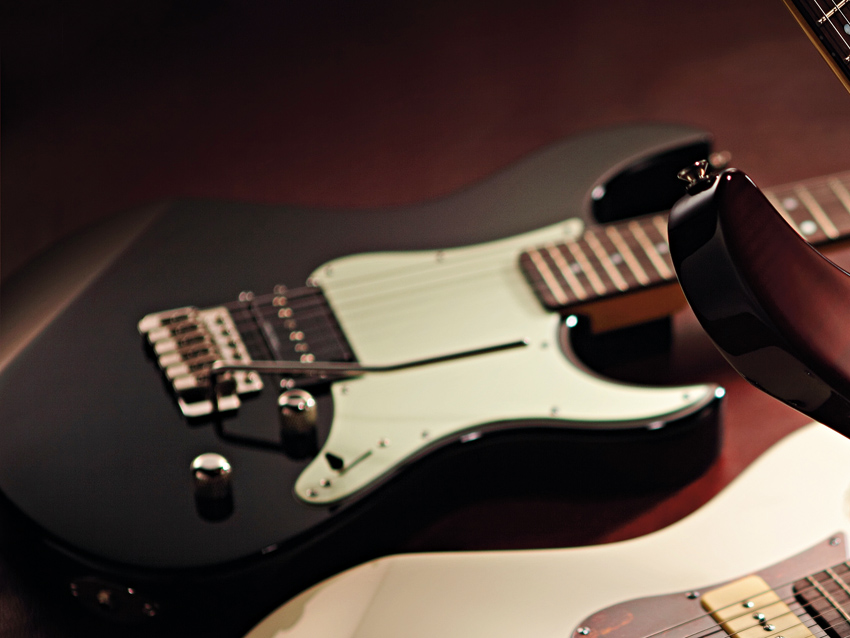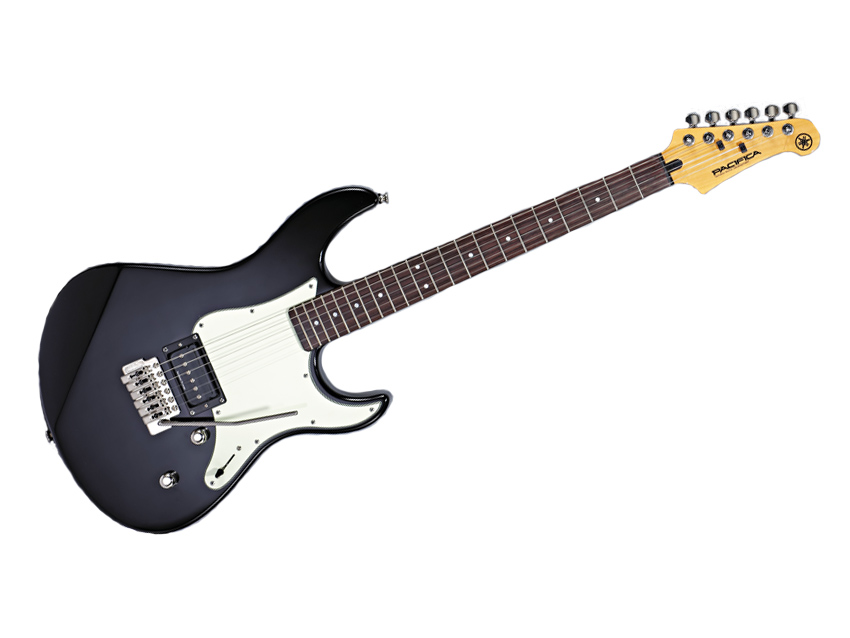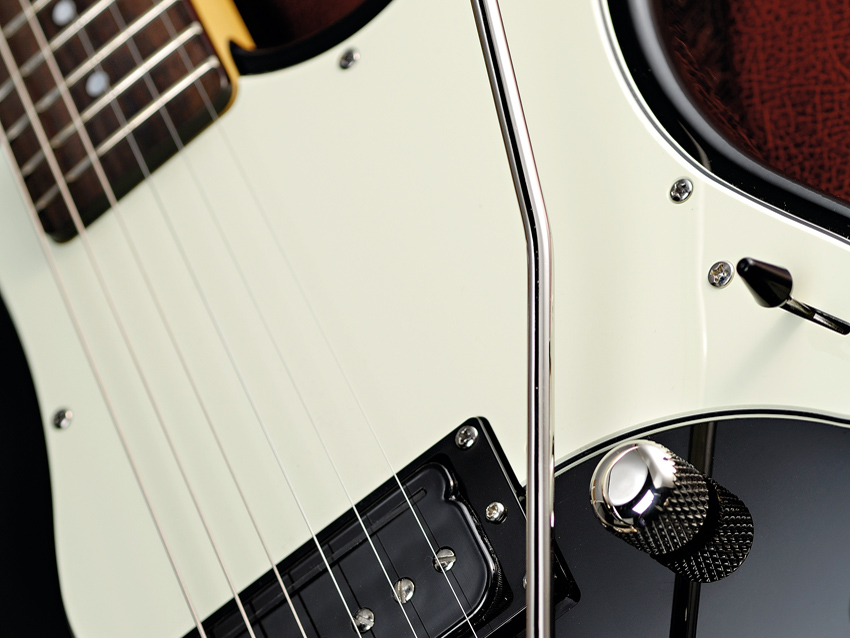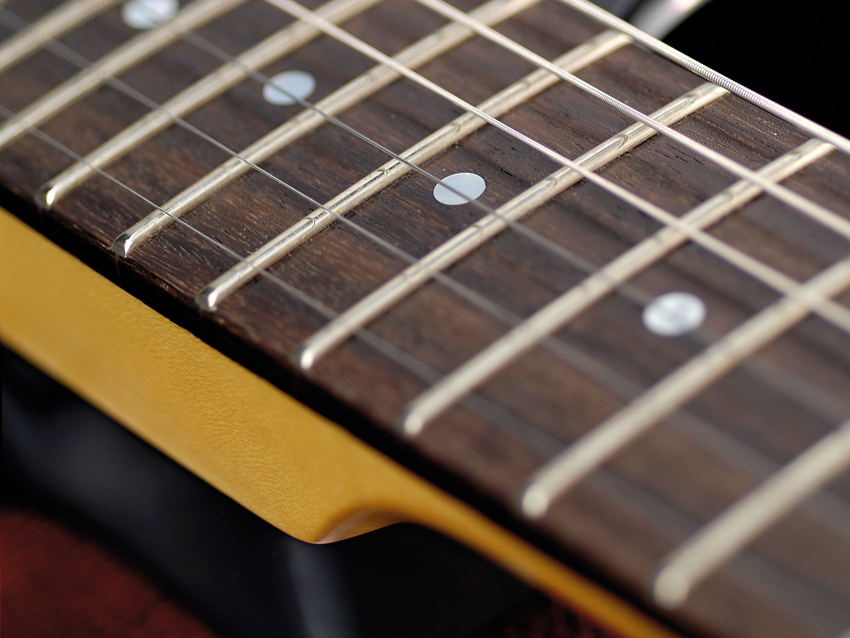MusicRadar Verdict
If your heart tends to beat to the sound of guilty pleasures such as Poison, Warrant, Van Halen et al, check this out.
Pros
- +
Palatable custom-shop vibe. Good choice of rock tones.
Cons
- -
Occasionally sticking vibrato.
MusicRadar's got your back

Yamaha Pacifica 510V

Yamaha Pacifica 510V

Yamaha Pacifica 510V

Yamaha Pacifica 510V
According to Yamaha, total sales of the Pacifica are in excess of 1,000,000 since its launch in 1989, and it's arguably the only brand that can hold its own at the lower and mid reaches of the market against the massive names of Squier, Fender and Epiphone.
Watch the Yamaha Pacifica 510V in action:
This new model is the result of more than a year's worth of planning, refining and testing, and is based on two Custom Shop prototypes.
"The P-Rails provides a wide array of tones and the humbucker gives out plenty of grunt for full-sized rock chords"
Driving the concept of revisiting the range of mid-priced Pacificas were Yamaha's Mark Kirkland and Julian Ward, and the latter takes up the story.
"We decided to base what was becoming the unofficial new Custom Shop Pacifica series on two models, ostensibly one each for the blues-rock player and the slightly heavier classic rock player.
"The two models eventually became three, so we could offer a more affordable version of one of them, but the concept was based around the two guitars that would become the 510V and 611HFM.
"The first thing we did was to spec some guitars that were very clearly targeted at specific players and that also filled a gap that we saw in the market," continues Ward.
"We determined a target player's key style influences fairly easily - heavier blues-rock and crossing into some classic hard rock: Def Leppard, not Creed. It sounds like an obvious target of guitarist to go after, but there are surprisingly few choices if you're that guy and you don't want something 'standard'."
The model has a solid alder body that's the same dimensions as the bread-and-butter Pacifica 112, and the general spec also includes Grover locking tuners and Graph Tech Black Tusq nuts.
First in the team's sights was a no-nonsense rock guitar that bore an unashamed resemblance to classic custom- made LA rock machines…
Build
"We really wanted to make a single-pickup Pacifica," states Ward. "When we started to think about why we were so drawn to this idea, all we could come up with was that single-pickup guitars were cool!"
He's right, of course, and the 510 is the Pacifica's first single-pickup design. However, there's more to it than that, as the pickup in question is a new version of the Seymour Duncan P-Rails - which has impressed us in previous encounters - providing both humbucking, single-coil and P-90 tones in an individual package.
"The only problem [with the P-Rails] was that we needed a wider spacing to go with the Wilkinson vibrato we'd selected, and that wasn't available from Seymour Duncan. So we worked with them to develop a Trembucker version and, as a result, have exclusivity on the Trembucker-spaced P-Rails for OEM use."
The three pickup modes are selected via a standard three-way lever switch and the expanse of barren scratchplate feels almost like it's mocking the absence of a neck pickup, to prove a point. The choice of three-ply vintage mint green makes it so much easier on the eye than stark white.
One thing for which 'boutique' guitars are renowned is their playability. The 510's maple neck feels a little fat, but is in no way clubby. It's finished using a gloss top coat over a vintage tint; Yamaha aimed specifically for a more modified vintage feel.
It's certainly comfortable to play, but perhaps a bare or lightly satin-finished neck would have suited the 'custom tweaks' ethos more effectively.
The vibrato tends to stick on occasion; it's easy to sort out with a tweak, or you might prefer to set it up for downward movement only, a la Mr Van Halen. Whatever, this is a very enjoyable rocker to play.
Sounds
The P-Rails provides a wide array of tones and the humbucker, while too hot to be classified as 'vintage' in character, gives out plenty of grunt for full-sized rock chords.
Forgive us, but as men of a certain age, the temptation to go all out on '80s-style riffs is just too great. We soon found ourselves bashing out Mötley Crüe's Looks That Kill and plenty more besides - this guitar positively begs for that kind of playing as you grin like the naughty teenager who lurks (not so) deep within.
Growing up again, the P-90 tone is not as fat as the genuine article, but it's more than usable in rock and bluesy settings, where you can use the volume and tone pots to eke out a wider variety of voices.
Let's not pull punches. Fender and Gibson have the heritage in this market, but that doesn't mean there aren't plenty of us out there who fancy something that's different, cool and great value for money.
Yamaha's Pacificas have always ticked the value box, but this guitar adds an air of something more unique and desirable in its LA hot-rod vibe: a good idea, well executed. Give it a go and see if there's a budget boutique choice here for you.
Simon Bradley is a guitar and especially rock guitar expert who worked for Guitarist magazine and has in the past contributed to world-leading music and guitar titles like MusicRadar (obviously), Guitarist, Guitar World and Louder. What he doesn't know about Brian May's playing and, especially, the Red Special, isn't worth knowing.
“I said, ‘Are we sure we can write a song about death?’”: The story of Mike + The Mechanics' classic No.1 The Living Years
“Without investment in music education our talent pipeline is at risk of drying up along with the huge opportunities for economic growth it brings”: UK Music draws up five point plan to “turbocharge” music education
“How daring to have a long intro before he’s even singing. It’s like psychedelic Mozart”: With The Rose Of Laura Nyro, Elton John and Brandi Carlile are paying tribute to both a 'forgotten' songwriter and the lost art of the long song intro









